MusicTech Interviews Beau Thomas – Ten Eight Seven Mastering
Our interest in music mastering continues with a focus on Ten Eight Seven Mastering. Beau Thomas has gone from being a DJ and drum ’n’ bass artist to one of the most sought-after mastering engineers in the country. Here, he lifts the lid on the dark art… Beau Thomas began life in the music industry […]
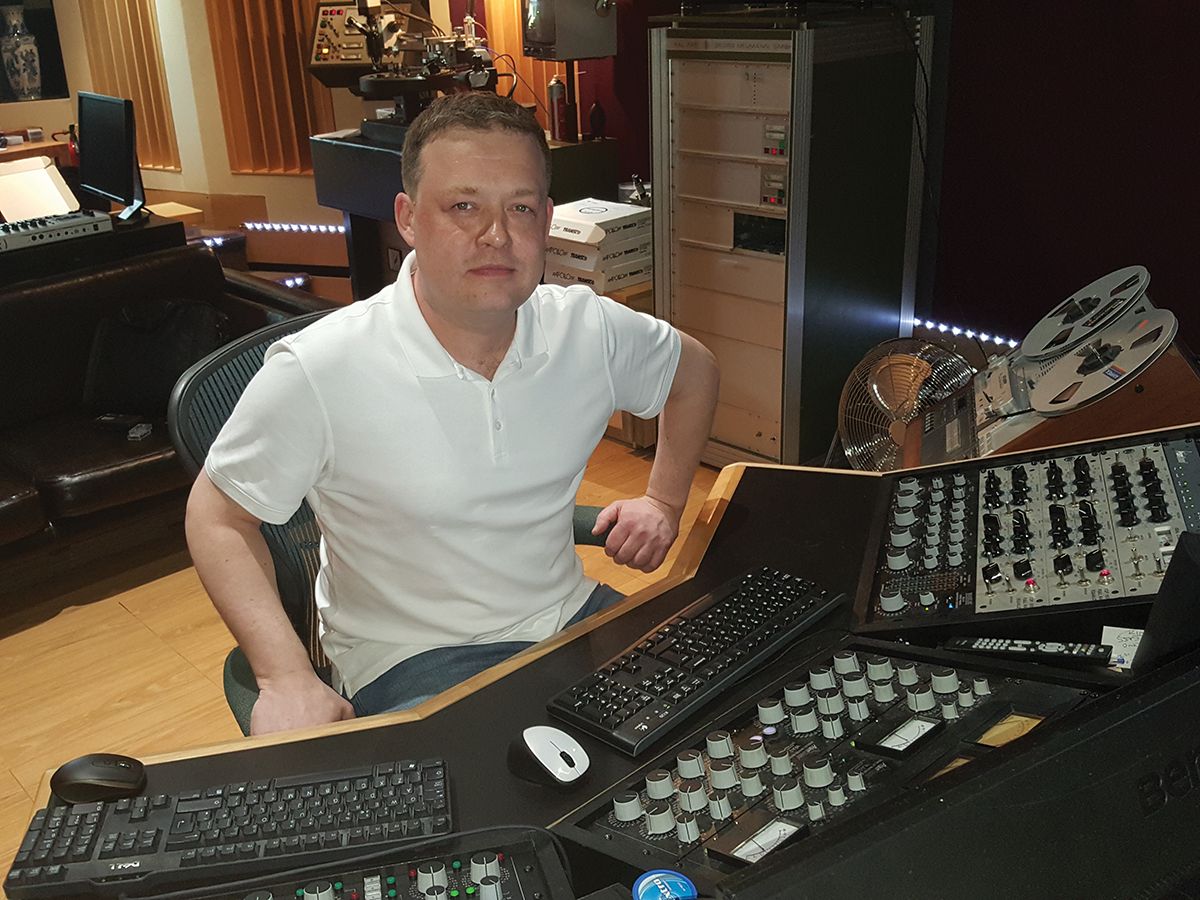
Our interest in music mastering continues with a focus on Ten Eight Seven Mastering. Beau Thomas has gone from being a DJ and drum ’n’ bass artist to one of the most sought-after mastering engineers in the country. Here, he lifts the lid on the dark art…
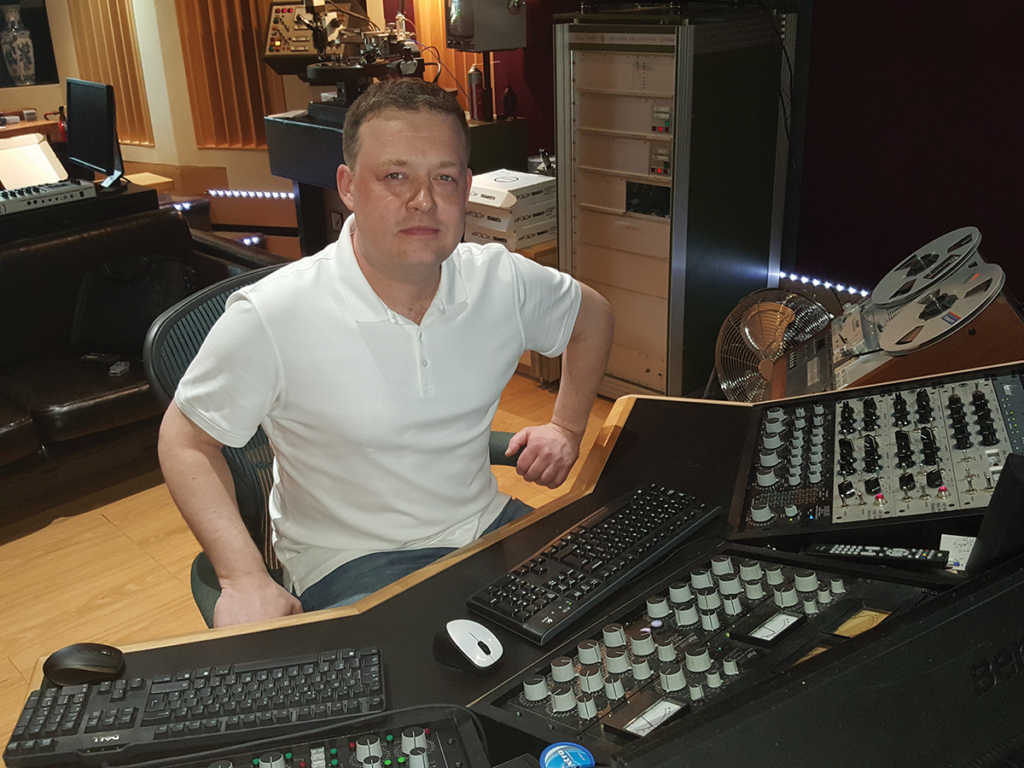
Beau Thomas began life in the music industry as part of drum ’n’ bass acts Babylon Timewarp, The White House Crew and Intense. He was then offered more lucrative work by cutting engineer Shane McEnhill, who offered him a job as a vinyl cutter at Heathmans Mastering.
After Heathmans folded and following a brief stint at Masterpiece Mastering, Thomas took the plunge, rented a studio and took the mastering-engineer hot seat.
Ten Eight Seven Mastering was the name of the new outfit in 2012 and now Thomas specialises in vinyl and CD mastering for a varied client list, including Wilkinson (RAM Records and Virgin), Icarus (Sony), a lot of work for Aphex Twin, dBridge and the Hyperdub label.
He has a wealth of knowledge and experience in mastering analogue and digital formats, making him one of the go-to engineers, especially with the recent resurgence in vinyl that has meant that his cutting lathe is never out of action. Here, he tells MusicTech about digital and vinyl mastering at Ten Eight Seven Mastering and offers plenty of advice, too…
MusicTech: So tell us how your interest in mastering began?
Beau Thomas: In 1999, everything fell apart a little bit and I needed a job. A great cutting engineer called Shane McEnhill, who now owns Finyl Tweek, used to work at Heathmans Mastering and he got me a job there.
I was a runner, hand-copying CDs. There were CD mastering rooms and vinyl rooms, and that’s when the appeal started to kick in. Although I was doing digital mastering at first, my world was vinyl. I’d already cut loads of dub plates and I wanted to be the best I could be. Back then, vinyl mastering rooms were the bigger rooms. They had the better speakers and lathes.
MT: How did you initially attract clients?
BT: If I’d have spoken to artists direct – like Fabio And Grooverider – and told them I was cutting, they’d have been like, ‘Beau who?’. Then I bumped into Quiff of Total Science and told him I’d cut him a free dub plate if he sent me two tracks.
He sent me 18 by the following Monday! He then told Fabio and various other people, and before I knew it, I had artists ’phoning up and wanting me to cut dub plates. Dub plates are a great way to start in mastering, especially vinyl, because if you fuck one up, you can just redo it.
It’s not like the record stage where you get test pressings that have to go off for processing and if they come back shit, you have to recut the lacquers and send them all off again. So that was a massive kick-start for me. I don’t think I cut an album for five or six years – all I did was single-track sides.
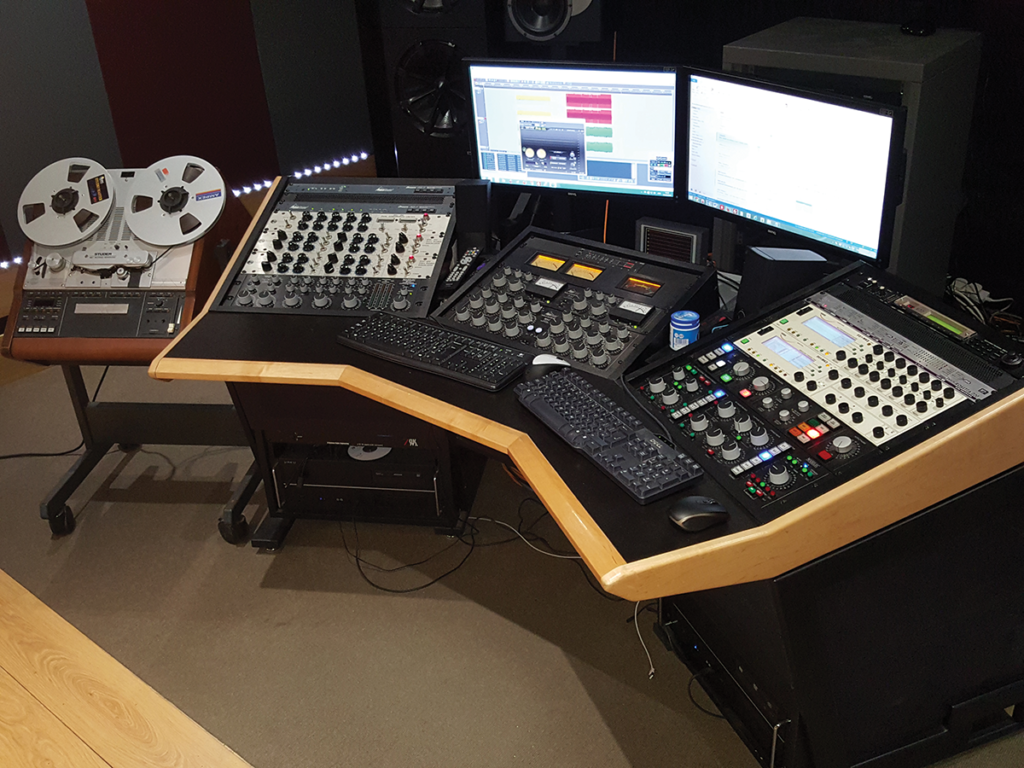
MT: So you built a reputation for Ten Eight Seven Mastering pretty quickly…
BT: I cut dubs for all the big guys; everyone did at Heathmans at the time, but it took time to prove myself until everyone was happy with the plates. Once you do that, your name’s scribed on the record, and that’s a big thing for vinyl. That’s why I still sign every record I cut.
MT: Tell us about the kit you have at Ten Eight Seven Mastering
BT: I was in a beautiful room at Heathmans, and was very fortunate because the owner Ronnie Garrity was really good to me. Then I was offered a job at Masterpiece – those mastering studios were built at a time when there was lots of money around and the rates and rents were astronomical.
Then studios started going from five rooms to two rooms and needed to start cutting back. Heathmans and Masterpiece went that way a little bit, and fortunately I was able to put in an offer to the owner at Masterpiece, who was thinking of emigrating.
I needed some money spent on the room. I wanted a new desk, a monitor panel and all the wiring redone, so I bought all the kit off him, rented the room and Ten Eight Seven Mastering was born.
We’ll be four years in November. A lot of people asked me why I didn’t do it earlier, but where do you buy a record-cutting lathe? The one I have is a VMS 80; I think they only made 74 of them. With the whole vinyl increase, they now cost anywhere between £80,000 and £100,000 each.
MT: That’s obviously expensive kit, so how do you go about charging?
BT: I wouldn’t charge a big label more than a small one, but if someone says they’ve started a new label and have never put out a tune before, then it might not be straight-off-the-book rate. Obviously, my prices have gone up over the years, but I’ve spent a lot of money on kit and I’m a lot better than I was 10 years ago.
I do a lot of free stuff, believe it or not. There’s a guy called Charlie Rhymes who’s worked with The Qemists and I just liked what he did. He hasn’t got a load of money, so I did four tracks for him for nothing. I try and look after people and judge things by where I think they’re at and how passionate they are, rather than how much money they’ve got.
MT: What do you think about the long-running analogue versus digital gear debate when it comes to mastering?
BT: I think it depends on the artist. You have someone like Skrillex who’s pretty much all in the box. He masters all his stuff using Ozone and is very, very clever.
Ultimately, using analogue gear will give you a different sound. Some people who do stuff in the box will use a limiter, an expander, an exciter and another limiter, and squash everything until it starts to sound painful.
A lot of people are surprised, but I do a lot more in the box than I’ve ever done. I have to say to myself that I’m using a plug-in because it sounds amazing and it’s the best product I can use to give a client the best master, and there’s no hardware limiter than can touch digital limiters, they’re just too slow.
Sometimes, the idea of using analogue kit is great, but the reality is entirely different. But some people come in for sessions and are adamant that they want to go through all the analogue gear.
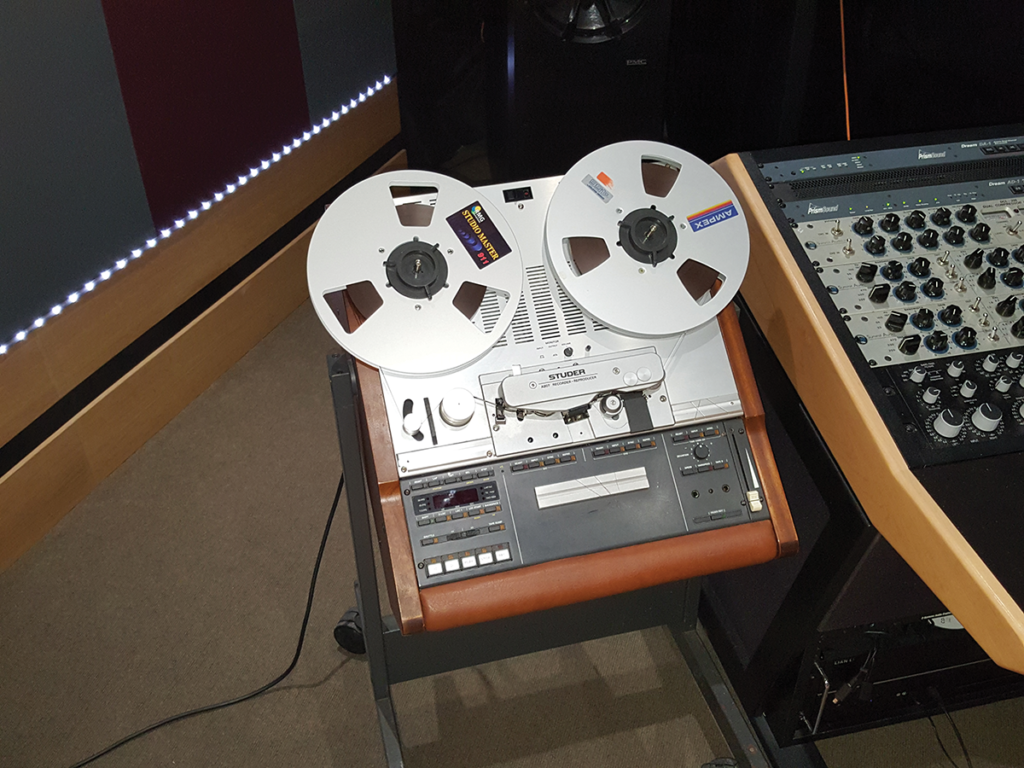
The Process at Ten Eight Seven Mastering
MT: How would you advise people to prepare their mixes for mastering?
BT: Ultimately, where people make a big mistake is that they try and achieve loudness over everything. Everyone wants everything to be loud and tends to A/B their tracks against a mastered song from someone they look up to.
I think people sometimes spend more time worrying about how loud something’s going to be than the mix-down itself. A good mix-down that is very controlled and sounds great will nearly always become really loud easily.
Everyone can slam the arse out of everything and push it through the roof, but that doesn’t mean it sounds that great. Those artists who achieve a really loud level and their stuff sounds great, it’s not the level that sounds great – it’s their mix.
MT: When you first receive an artist’s music, how do you analyse what needs doing to it?
BT: When I get an album of, say, 15 tracks, I’ll tend to have a little flick through just to get an idea of what the best-sounding track is or what’s the loudest. An album can only be as loud as the quietest song, and you can’t make those as loud as the loud ones, so you have to turn everything down to match it, which no one likes doing.
Some artists come in with tracks that are super-loud already and those don’t need limiting, but some are a bit dull or a bit too bright. Some sound so good I don’t even touch them. I like working from gut instinct and start to EQ very quickly. Working in the box allows you to do that.
MT: Talking of loudness, where do you think the demand for it comes from?
BT: It’s clubs, almost definitely. Back in the day, you’d turn up at a club and the mix was pretty much locked, with a limited amount of volume increase – otherwise, everyone would turn it up and up and up and blow the system. So everyone wanted their stuff to be louder and louder.
Part of the reason I got a lot of work is that I cut really loud dub plates, because that’s what people wanted. Then digital started appearing and CDJs. With all the limiters and maximisers, people started doing a little bit of mastering. Level-wise, vinyl became inferior to digital: people would smash the arse out of it and everyone got used to it sounding like that.
MT: How often do you end up not doing anything while mastering?
BT: If I don’t need to touch it, I won’t touch it. Back in the day, I’d shit myself and think they wouldn’t want to use me again, but I realised why they’re here is because they’re not sure.
Matrix & Futurebound have sent me masters in the past, but when I compared what I did to theirs I could only get it sounding the same, or if I tried to make it better, it ended up being worse. Some people are a bit underwhelmed because they expect something to come back bigger and better, others think it’s amazing.
MT: Will an artist like Aphex Twin ever come down to Ten Eight Seven Mastering?
BT: Like most of my clients – even the ones I know well – it’s much easier for them to send tracks by email. So I’ve never met him, but we deal on email quite a lot. He is lovely to work with, he’s a really cool guy, very easy-going and just does his thing.
He just fires it over in email and says, ‘I’ve got a load of stuff for you, can you see what you can do?’ I send it back and, most of the time, he thinks it’s wicked. Now and again, there’s the odd little change.
MT: What would you say is the most important element of mastering?
BT: The end product; it’s got to be. If I did a shit job, they wouldn’t come back. However, mastering is very subjective – what one person loves, another hates. I often say to people, if you’re not happy or there’s something you’d like changed, please let me know, particularly when it comes to levelling – how loud something is.
Most people, despite what they say, want stuff really loud, but there is the odd person who says, ‘You’ve ruined my song, it’s too loud’, so I’ll go back in and change it. If we’re doing an album for digital and that’s going to be cut to vinyl as well, I would prefer to sit with them in the room when we’re doing the digital version and let them go away and listen to that first, because in here, everything sounds loud and amazing but when they get home and listen on headphones or their regular setup, it might not be quite what they thought it was.
Ten Eight Seven Mastering – The Kit
The Desk
MT: Talk us through the main desk at Ten Eight Seven Mastering
BT: This is the hub of the studio, and as you can see, I’m a big Maselec fan. They’re made by a guy called Leif Mases, who’s Swedish, I believe. He was Abba’s engineer, super-technical and a great producer and mix engineer, but he found that there wasn’t enough kit made specifically for vinyl mastering, especially interfaces.
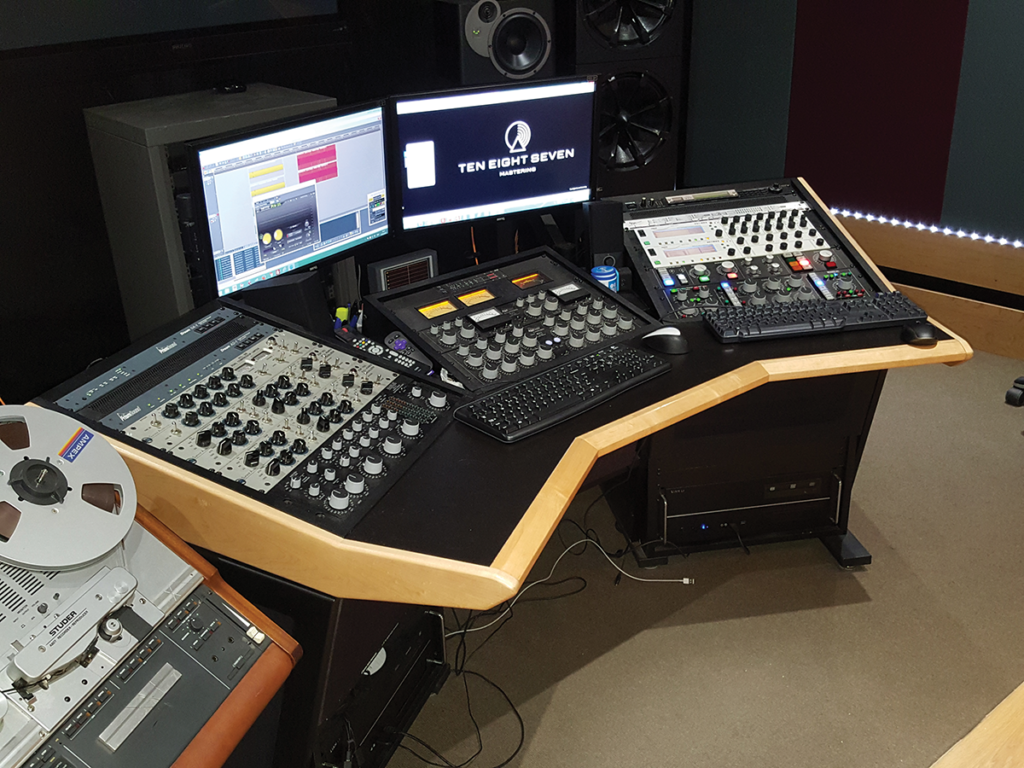
For example, there has to be something that monos the bass, because you can’t cut stereo bass, so he created this MTC-1 console and put in an elliptical EQ and a knob for stereo width. If music’s too wide it can cut the vinyl too deep, or the sides can distort, so you have to pull the stereo width in slightly.
These two features weren’t on any hardware kit, you had to get them custom-made. It obviously has volume control, different sources for cutting and I can input-bypass everything and use the output to A/B test things. All of my kit is on these insert switches, there’s no patch bays or the need for dodgy cables – it’s either engaged or it’s out.
The Lathe
MT: Tell us a little about the lathe operation…
BT: It’s a VMS 80 – the flagship lathe. The cutter head has a pipe that shoots industrial-grade helium into it to cool it down while the coils heat up inside. The more treble you send to the lathe, the hotter it gets. When the cutting stylus hits the lacquer, there’s a shaving that comes off, called the ‘swarf’, and that gets sucked up a pipe.
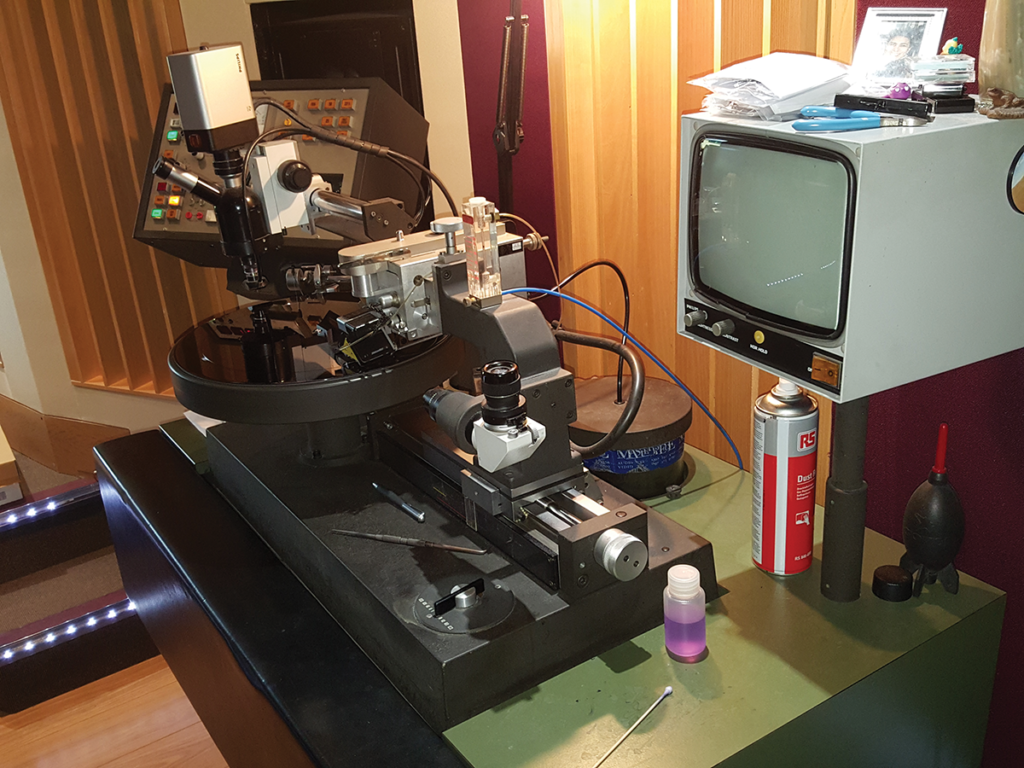
Cutting is like pushing a pyramid into sand; the deeper you go, the wider the groove becomes. The space between the grooves is called the ‘land’. If you’ve got too little land, the grooves will modulate left and right, cross over and hit each other – then you get jumping records.
If you have too much, then the grooves will be so far apart that you’re just burning up time, and you don’t want to burn up time to preserve the quality of the record.
The Reel-to-Reel
MT: How do you use the reel-to-reel in the mastering process?
BT: It’s a Studer A807 quarter-inch tape with vari-speed. It does everything I need it to do. When I was at Masterpiece, they had a Studer A820, which is the flagship model. I didn’t have the money to buy it back then but always wanted one, because people like a bit of tape saturation.
Artists that write in the box exclusively sometimes want to get a bit of hiss into things. Recently, an artist called Joy Orbison came in and wanted to just take that digital edge off, so we ran it all through tape and back out into the computer.
MT: How do software tape-saturation plug-ins compare to the ‘reel thing’?
BT: There’s some absolutely fantastic plug-ins. In particular, UAD make Ampex and Studer plug-ins with all the extra bits, so you can tune things and add hiss. Most artists have got these plug-ins and there are numerous other tape-emulation saturation plug-ins by companies like Slate Digital and Waves.
I’m not saying the Studer is much better than those plug-ins, but it’s just a nice thing to have – it’s not so much about me, but the clients and what they want. The thing about tape is that once you hit record, you’re committed, whereas with plug-ins you tend to keep tweaking and changing – and people don’t always like that.
The Outboard at Ten Eight Seven Mastering
MT: And you also use Summit Audio outboard?
BT: Yes, I’ve got Summit EQs and compressors, because I’ve always loved Summit stuff. If I add 2dB at 10Kohms on the Summit, it will still sound very different to the Maselec, which is really more for precision.
If I’ve got a song that sounds a bit flat on the top end, I can add treble and top end on the Maselec to make it brighter, but the Summit EQ will colour it and the compressors sound completely different.
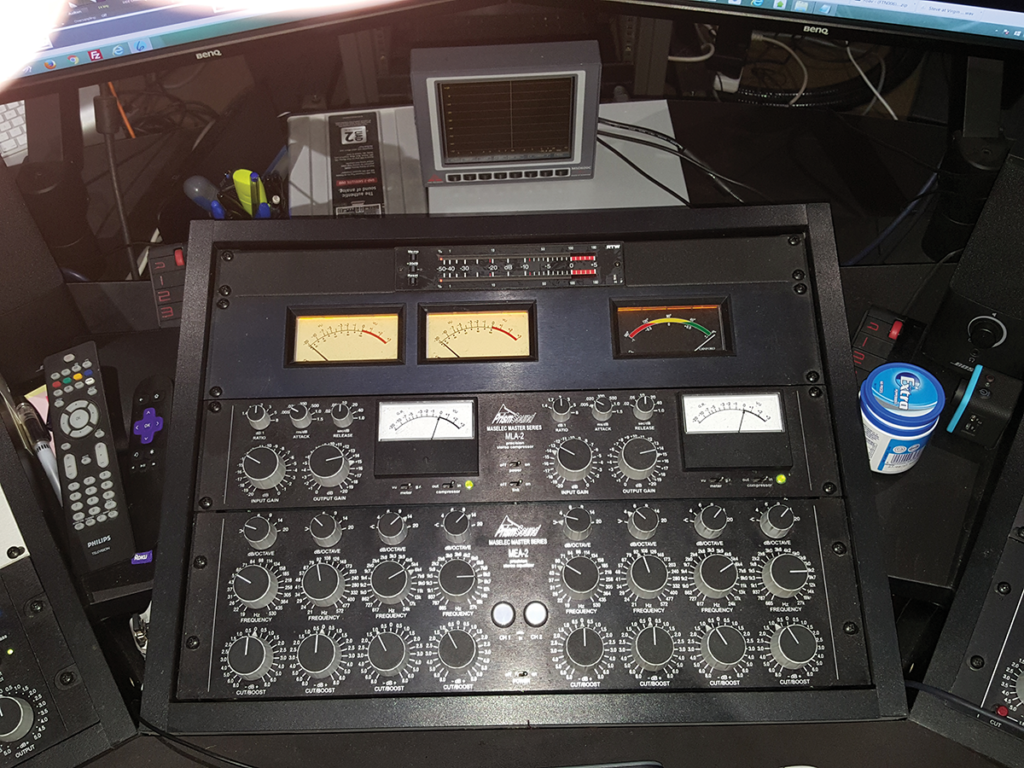
MT: Do you have any hardware for digital EQing at Ten Eight Seven Mastering?
BT: I have a digital EQ made by Weiss – Daniel Weiss, I think his name is. The EQ1-MK2 is a dual seven-band parametric equaliser, but to be honest, it’s in bypass because I tend to use internal plug-ins by UAD and FabFilter a lot more now.
Two plug-ins I can’t do without at the moment are Ozone 7, because the limiter is second to none, and the Brainworx V3 EQ plug-in. I also use a DS1-MK2, which is a de-esser limiter. I love it – it’s saved so many records I’ve cut from sounding like shit. I can catch any distorting snares, hats and vocals by moving the frequency and changing the bandwidth.
The PMC Monitors
MT: Tell us about the PMC monitors?
BT: They originally cost £90,000 but I didn’t pay that [laughs]. Mastering wise, every studio I’ve ever worked in had these in the room, so you just get used to them.
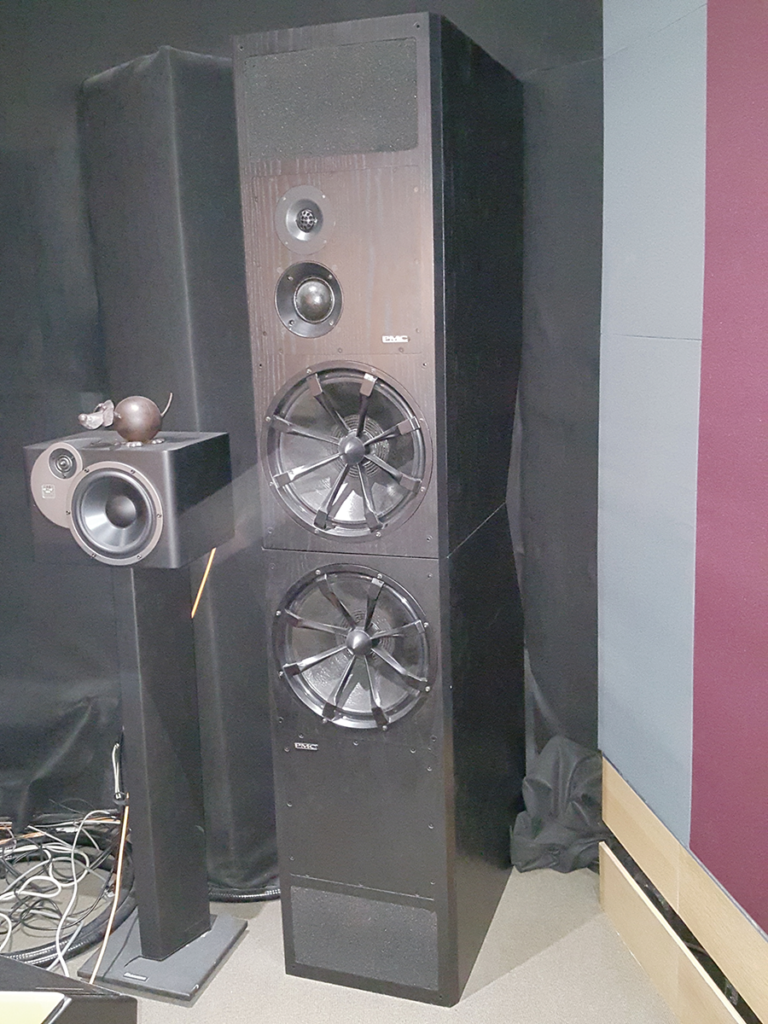
I’ve worked on ATCs and Genelecs, but if the PMCs are set up with the right acoustics and everything’s balanced correctly, you just can’t better them – they sound amazing. I think it’s to do with their transmission line, but even at very low levels, they still project sub accurately, so you don’t need to have them too loud.
The Resurgence of Vinyl
MT: How does the approach to mastering vinyl and digital files differ at Ten Eight Seven Mastering?
BT: Digital and vinyl mastering are two different things. What you can do on a digital master you can’t necessarily do on vinyl, i.e. the amount of
top end you can put in.
People say things like, ‘Oh, I love the sound of vinyl and think it sounds much better than digital’, but digital doesn’t degrade with every revolution. It’s a preference thing. Vinyl is much more natural-sounding; you can’t reproduce these mad, super-squelchy frequencies.
People prefer the sound of vinyl because they prefer duller, slightly warmer-sounding material; other people love super-compressed, loud digital stuff. So you can’t always cut the digital version to vinyl, as the differences are sometimes quite extreme.
MT: How does vinyl degrade with every revolution?
BT: The outside of the record is the brightest part of the record. As the record plays through, you lose treble because, in effect, it’s travelling less distance over the same amount of time, so there’s less information.
That’s why when some people find out there is a B2 on a record they sigh, because it’s inferior. So the bigger the disk, the more information per revolution, and that information is treble or definition – top end, basically.
So I’ll alter the song as it plays through, starting off with less treble, and put the treble back in manually as it plays through. So yeah, vinyl’s not perfect, far from it, and most people aren’t even aware of it.
MT: But people are still going back to vinyl, even if it’s just for listening…
BT: I think it’s a physical thing. We’ve lost books, CDs, VHS, DVDs – we’ve got nothing in our house, just a remote and a ’phone. We’ve moved to an age where we can stream anything with today’s broadband speeds, but we still listen to MP3s.
Why the fuck are we listening to MP3s – because they sound better? It’s true that with some 320kpbs mp3s you’ll struggle to tell the difference from the original master WAV, but in others, it’s really noticeable. MP3s were created because bandwidths used to be quite small.
To send an album at 600MB would have taken a week, so they created a way of sending it faster, but somehow, we’re at the pinnacle of the digital age and still listening to these diddly little music files. The average CD is 16-bit and even that’s superior.
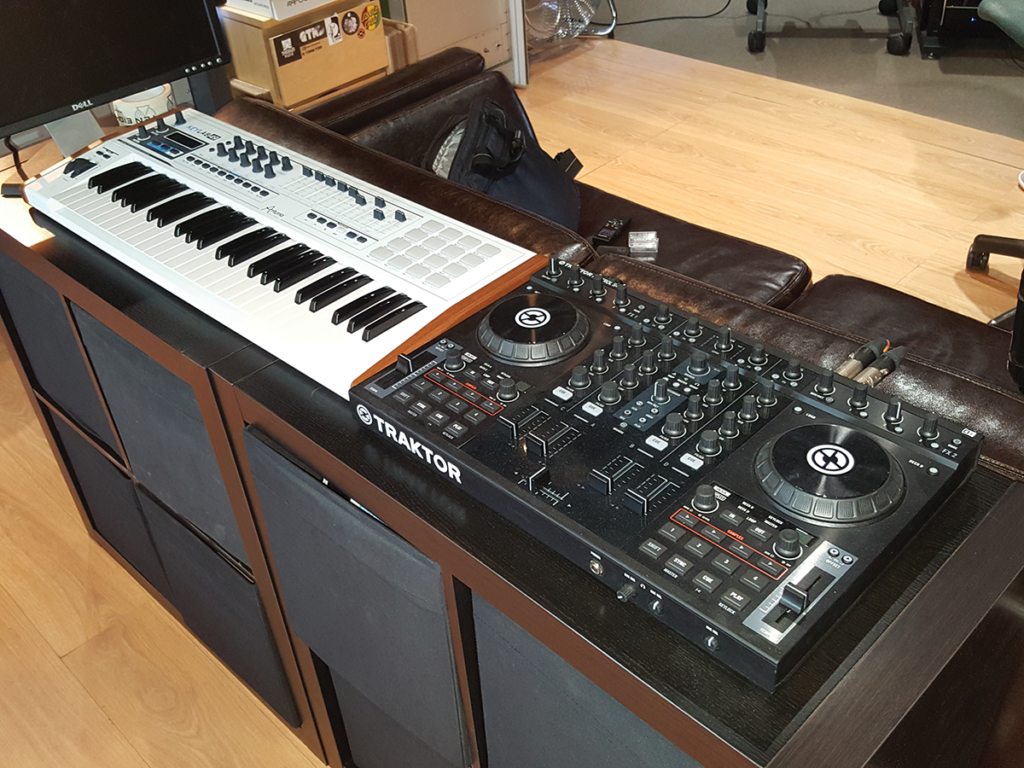
The Final Master
MT: What’s your view on using headphones to mix and master at Ten Eight Seven Mastering?
BT: I know a lot people who have bought or been given headphones and have stopped using their speakers for mixing, because their headphones are much more accurate than their room. Headphones are like having a second room or a second set of speakers, and a lot of the time, people don’t have the correct setup. I’ve got a pair of LCD-X headphones and they sound amazing.
I never used to have headphones; I just felt if I could get stuff to sound good on the PMCs, then that would be enough, but there were examples where I could hear the kick distorting a little bit on the headphones and, surprisingly, it’s very hard to hear those subtle bits of distortion on the PMCs, because they’re so big. In my opinion, people often struggle with the low end in their tracks, so I think a good pair of AKGs or Beyerdynamics can give you a good setup for mixing on headphones.
MT: Is there any kit you’re looking to add to the Ten Eight Seven Mastering studio?
BT: Software-wise, I’ve had a bit of an upgrade. I’m quite tight with iZotope and they provided me with Ozone 7 Advanced, which I’m very happy with. I like the UAD plug-ins and, kit-wise, I want some Manley stuff and I’m probably going to buy some new converters to offer a slightly different way of routing stuff.
MT: Do you think Ten Eight Seven Mastering will expand?
BT: I seem to be booked up permanently. My brother works here in the evenings, so eventually, we’ll expand and open a second room. We get a lot of people sending their CVs and I feel really bad that there’s nothing here for them.
I was given an opportunity at Heathmans Mastering to work my way up, but in those days, there were 40 engineers in three buildings, so things have changed a lot
Find out more about Ten Eight Seven Mastering Here